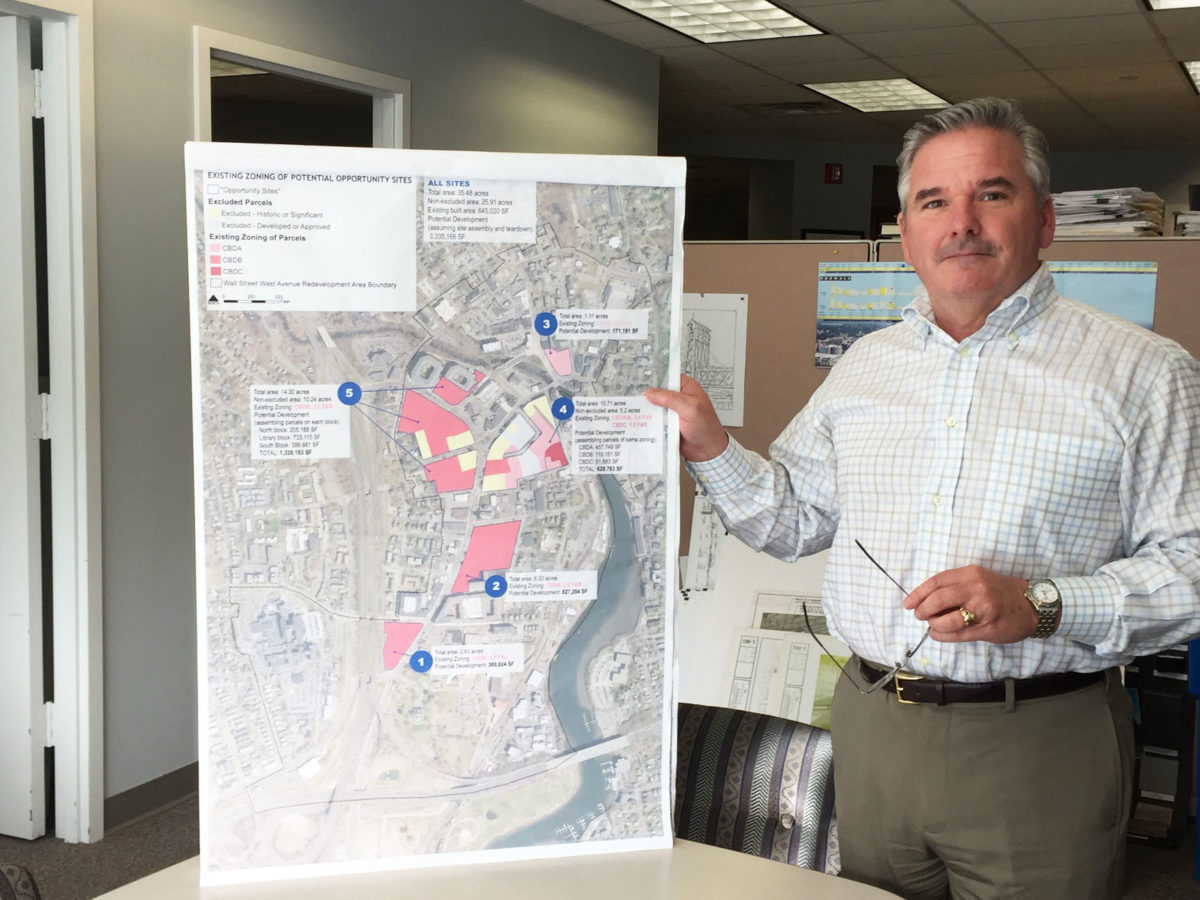Navigating Norwalk improving, for developers and residents alike

Navigating Norwalk is getting easier, not just for developers dealing with the city”™s government, but for its residents as well, according to Timothy Sheehan.
The Norwalk Redevelopment Agency executive director said that Norwalk”™s sometimes cumbersome planning and zoning regulations are in the process of being simplified, as a slew of projects are coming to fruition. Those include transit-oriented development around its two main train stations in South Norwalk and East Norwalk; the ongoing redevelopment of Washington Village, the state”™s oldest public housing complex; construction on the massive SoNo Collection mall; and the addition of numerous multifamily residences that are projected to add over 1,000 apartments over the next couple of years.
“We”™ve seen a lot in terms of development over the course of the last decade and a half,” Sheehan said. “And we”™re seeing a lot more now.”
Thus the need for streamlining the P&Z process, he said. “It”™s been a systemic problem, especially in the urban core of the city, where there”™s been a multitude of zoning districts in a very small geography.”
In fact, Sheehan said, when the city was developing its TOD plan for South Norwalk, it discovered 12 different zoning districts within a radius of less than a mile. “It was like, ”˜What”™s the point of this?”™” he said. “It was so confusing to anyone trying to advance a development process. People would come in and look at what we wanted to see in terms of development, agree with it, then start going through the zoning regulations and decide that it wasn”™t doable.”
Sheehan cautioned, however, that as with most things government-related, the changes aren”™t going to take place overnight. “It”™s an evolving process,” he said.
Among the new projects dotting Norwalk is a major undertaking by Spinnaker Real Estate Partners to develop apartments in the long-derelict area around the Park and Main street”™s intersection. The company received an $8.6 million loan from the state bond commission to fund that work. Spinnaker has also submitted plans for a six-story, 106-unit multifamily structure at 20 and 24 Monroe St., next to the South Norwalk train station.
The firm behind the South Norwalk TOD, Milford-based Harriman Associates, recently won city approval to conduct a similar study for the East Norwalk train station. Funded by a $125,000 state grant, that work will begin shortly, Sheehan said.
He also underscored the ongoing redevelopment of Washington Village as “one of the most important projects” in the city. Now in its second phase, which will include the demolition of an existing 136-unit complex in favor of 136 new workforce, public housing and market-rate apartments, the new Washington Village will be a significant improvement over the original, built in 1941, Sheehan said.
Phase One included opening 10 units at 13 Day St. and 70 units at 20 Day. Phase Three, which will add a 50-unit building along Day Street and a 58-unit building along Water Street, is scheduled to start in the fall of 2019.
The project is funded by a $19.2 million construction loan from TD Bank and a U.S. Department of Housing and Urban Development Choice Neighborhood Initiative Planning Grant of $30 million.
“That”™s been a huge home run for the city,” he said, adding that the state “has been a fantastic partner, as well as the city.”
Sheehan noted that work is also continuing on the Residence Inn by Marriott-SoNo, on South Main Street, and on the 717,000-square-foot SoNo Collection, which he said is still on schedule to open in October 2019.
“It”™s been interesting to go from looking at plans and renderings to actually see the physical building going up,” he said. Despite some public complaints about the gargantuan mall negatively impacting the area, Sheehan said, “The context is looking good to me in terms of fitting within the urban environment.”
He further noted that representatives from anchor retailers Bloomingdale”™s and Nordstrom are now onsite to oversee construction of their respective stores.
As for making it easier for Norwalk residents to get around town, Sheehan said the city”™s pilot Wheels2U program, an on-demand micro-transit service similar to Lyft and Uber that launched last month, has been steadily growing, mostly through word-of-mouth.
Using an app, riders can summon blue city Wheels2U vans from within certain districts, primarily around the South and East Norwalk neighborhoods. The vehicles are available from 5-12 p.m. Thursday through Saturday and noon-9 p.m. on Sunday.
Sabrina Church, community development planner at the Norwalk Redevelopment Agency, said that while the first couple of weeks saw total ridership in the 60s, “last week we had 120. And it”™s really been through word-of-mouth. People have a good experience and tell their friends about it.”
Average wait time for one of the two vans, a third can be added when demand increases, is about five minutes on Thursdays and Sundays, and about 10.5 minutes on Saturdays, Church said.
She said the results were especially impressive “because we built this up from scratch. We were introducing a brand-new concept, with no built-in ridership.” She noted that, unlike Uber and Lyft, the vans are designed to carry several passengers at once, but said that so far that hadn”™t appeared to be an issue.
While the pilot Wheels2U program is scheduled to expire in February, Sheehan said the budget had been found to extend it another six months, “and then we”™ll see what happens.”
While ridership is free during the pilot period, he noted that riders would be charged $2 starting in February.